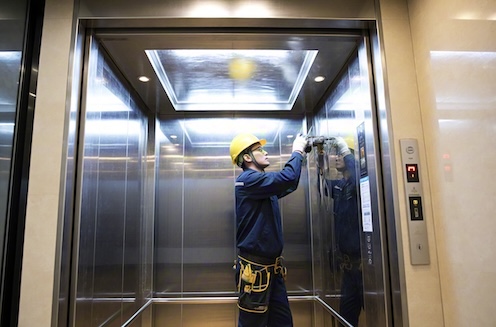In the bustling fabric of the city, elevators have long become an indispensable "vertical artery" for both individual residences and commercial facilities, facilitating people's daily commutes and carrying their expectations for convenience and efficiency. However, when customers happily complete the selection and installation of elevators, expecting to usher in a new chapter of convenient life or efficient business operations, they never expect to step into a nightmare of recurring malfunctions caused by varying maintenance techniques.

The person in charge of a large shopping mall is still very frightened by the elevator malfunction incident. The shopping mall has a huge flow of people and the elevators are used very frequently, being a crucial equipment for maintaining the normal operation of the mall. Once, during the peak business hours, one of the passenger elevators suddenly experienced severe shaking and then stopped running. The mall quickly contacted the elevator after-sales maintenance team. The maintenance personnel rushed over and, after a brief inspection, concluded that there was an object stuck in the elevator track. After clearing it, the elevator resumed operation. The person in charge of the mall just let out a sigh of relief, but unexpectedly, the same elevator had a similar malfunction the next day. The shaking was even more severe and there was also abnormal noise.
We contacted the after-sales service again. The maintenance personnel determined that the motor bearings were worn out. After replacement, the elevator was temporarily functioning normally. However, one week later, it "went out of service" again and trapped the customers. A detailed investigation revealed that it was due to a software bug in the control system that led to a misjudgment. Because the maintenance personnel had limited technical skills and insufficient knowledge of the new control system, they could only "treat the symptoms rather than the root cause". The problem kept recurring, seriously affecting the operation of the shopping mall and damaging its reputation.
Modern commercial elevators are complex systems integrating multiple technologies. Maintenance personnel need to possess solid professional knowledge, rich practical experience, and the ability to continuously learn in order to accurately troubleshoot problems. However, at present, the quality of personnel in the elevator after-sales maintenance market varies. Some lack systematic training and have insufficient knowledge of new technologies and equipment, making it difficult to ensure the maintenance quality.
Market research data shows that over 70% of commercial premises managers have reported experiencing recurring elevator malfunctions. Among them, the issue caused by varying maintenance techniques accounted for as high as 60%. This indicates that maintenance technology problems have become one of the main pain points in the after-sales service of commercial elevators.
A villa owner was also trapped in the predicament of elevator after-sales maintenance. The owner installed a household elevator in the villa to improve the quality of life. However, the elevator frequently broke down shortly after it was put into use. Sometimes it would suddenly stop at a certain floor, and sometimes the door couldn't close properly. The owner contacted the elevator after-sales maintenance personnel. The first maintenance personnel said that it was due to poor contact of the elevator door lock, and the problem was temporarily solved after adjustment. But not long after, the fault occurred again, and it became even more frequent. The second maintenance personnel judged that it was a fault in the elevator's speed limiter, and after replacing the speed limiter, the elevator still couldn't operate normally.
After multiple repairs, the problem still hasn't been completely resolved. The owner not only has to bear the safety hazards caused by the elevator failure, but also has to spend a lot of time and energy communicating and coordinating with the after-sales service. The originally warm and comfortable home life has been disrupted by the elevator failure, and the owner is extremely disappointed with the quality of the elevator and the after-sales maintenance service.
Elevators, as an important facility in individual residences, their safety and reliability directly affect the quality of residents' lives. However, due to the relatively fragmented nature of the individual residence elevator market, after-sales maintenance services are often difficult to ensure. Some small elevator enterprises, in an effort to cut costs, hire unqualified maintenance personnel, resulting in poor maintenance quality and frequent breakdowns.
The problems of inconsistent maintenance techniques and recurring faults in elevators have become a major concern for customers after they purchase elevators. To solve this issue, elevator enterprises need to strengthen the construction of their after-sales maintenance teams and enhance the technical skills and professional qualities of maintenance personnel. Regulatory authorities should also increase the supervision of the after-sales maintenance market for elevators, standardize maintenance practices, and protect the legitimate rights and interests of customers. Only in this way can customers truly enjoy the convenience and safety brought by elevators and escape the nightmare of recurring faults.
